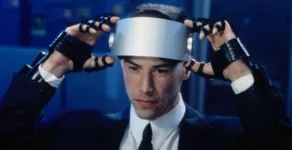For years we have expounded on the future technologies that will shape our lives. Flying cars, pill-sized meals, and robot-sidekicks. While these ideas may still be pure fantasy, there is one futuristic technology that is becoming increasingly integrated into everyday life: virtual reality. From Google’s cardboard to Facebook’s Oculus Rift, more companies are doubling down on VR products that have the potential to alter everything from healthcare to communications. And while there is definitely still room to grow in the realm of VR, many industries are already experimenting with VR products to enhance consumer experience.
Travel
Thanks to the Internet and Google Earth, we can already explore the Italian Countryside and the bustling streets of Hong Kong without ever leaving our living rooms. Virtual reality is taking the experience of remote traveling to an entirely new level and travel brands are clamoring to join in. Because virtual reality has the capacity to make people truly feel a part of a unique experience, it’s an especially enticing marketing practice for travel companies. Marriott has recently begun experimenting with in-room VR programs at two of it’s locations. Guests have the opportunity to use VR headsets to explore to follow real people around three locations: Beijing, Chile, and Rwanda. The immersive nature of the VR adventures gives off the feeling that they are truly transported and trailing their guides as they traverse through the terrain. IN addition to offering a unique experience to guests, the VR project, aptly named Vroom Service, also inspires wanderlust. Once someone has a taste of Chile (albeit, a virtual one) it’s difficult to stifle the desire to see and experience more.
Retail
With more people choosing to shop online for products than purchase in-store, retailers are clamoring to devise unique experiences to help customers understand a product’s value and the various ways in which it can enhance their lifestyle. And as Amazon continues to infiltrate retail verticals, they’re investing in VR solutions to help convince consumers to view their online bazaar as more than just a pit stop for books and toiletries. Several reports have indicated Amazon’s interest in fleshing out its furniture and home appliance offerings. But these big ticket items are no easy sell. Most customers do not purchase new washing machines or sofas on a whim; they take the time to research, measure, and try to imagine how the potential purchase will add to their homes. Amazon is looking to make this decision process a bit easier. Through VR Amazon will enable consumers to better understand how a piece of furniture looks and feels in a home environment. Although they aren’t the first home goods retailer to incorporate VR, this technology will certainly help Amazon establish itself as a serious competitor in the home goods vertical. As people spring clean and eye new home upgrades, the retailers that are able to paint a vivid picture of furniture and appliances in the home will win consumers over.
Education
The beauty of VR is that it lets people experience something before committing to it. For example, if someone is not sure that skydiving is actually their cup of tea they can try a VR-simulated experience before jumping. Educational institutions are now applying this same philosophy to the admissions process. Choosing the right college is one of the most difficult and significant choices in life. And although most students visit before committing, taking the time to drive (or in many cases, fly) to a potential university is big time and monetary commitment. Universities are offering virtual-reality tours to help potential students really experience campus life by walking the quads, venturing into dining halls and exploring residencies.
The possibilities for the uses of VR are endless. Consumers have a thirst to experience products and places firsthand, even if it is financially out of reach. Brands are also facing the challenge of delivering interactive engagements that bring consumers into the story. Brands know that consumers want to experience stories, and it’s up to them to turn this data into an actionable and engaging plan.








